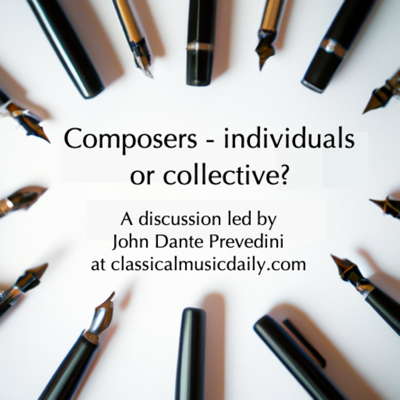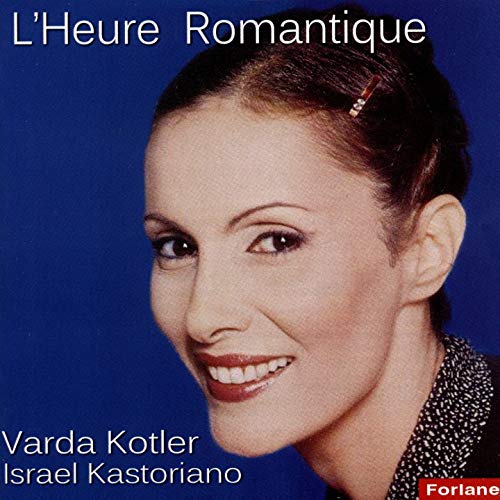- Marcel Tournier
- Sergio Rendine
- harmonia mundi usa
- Thomas Augustine Arne
- crossover
- Phillip Ying
- Worcester Jazz Orchestra
- Tom Gibbons
 DISCUSSION: John Dante Prevedini leads a discussion about Composers, individuals or collective?, including contributions from David Arditti, Halida Dinova, Robert McCarney and Jane Stanley.
DISCUSSION: John Dante Prevedini leads a discussion about Composers, individuals or collective?, including contributions from David Arditti, Halida Dinova, Robert McCarney and Jane Stanley.
 SPONSORED: CD Spotlight. Well Realized - Varda Kotler and Israel Kastoriano - recommended by Geoff Pearce.
SPONSORED: CD Spotlight. Well Realized - Varda Kotler and Israel Kastoriano - recommended by Geoff Pearce.
All sponsored features >>
Canada's preeminent touring chamber group?
PAUL BODINE listens to music by Mozart, Beethoven and Dinuk Wijeratne played by the New Orford Quartet
In 1951 Orford Arts Centre was founded as a classical music academy in gorgeous Mont-Orford National Park, 125 kilometers east of Montreal, Quebec. Fourteen years later, Orford violin students Andrew Dawes and Kenneth Perkins, joined by violist Terence Helmer and cellist Marcel Saint-Cyr, formed the Orford String Quartet under the center's aegis. Over the next quarter century, the Orfords produced sixty-plus recordings, won three Juno Awards (Canada's highest musical honor), and established themselves as Canada's preeminent touring chamber group. Besides canonic repertoire - Beethoven (they recorded the entire cycle), Mozart, Schubert, etc - the quartet also performed about thirty Canadian composers, from R Murray Schafer and Harry Somers to Claude Vivier.
Eighteen years after the Orfords retired, the Orford Arts Centre (now Orford Musique) invited violinist Jonathan Crow, currently Toronto Symphony's concertmaster, and Brian Manker, Principal Cellist of the Montreal Symphony, to form a new quartet to represent and be resident at Orford. Violinist Andrew Wan, now Montreal Symphony's concertmaster, and violist Eric Nowlin rounded out Orford's new incarnation. When Nowlin later became the Detroit Symphony's first violist, Sharon Wei, a Yale graduate and Western University professor, stepped in in 2021.

The New Orford Quartet. Photo © 2021 Dahlia Katz
The New Orfords have continued the original unit's dedication to Canadian composers, performing the likes of Glenn Gould, Ernest MacMillan and Jacques Hétu, and commissioning quartets from François Dompierre, Gary Kulesha, Airat Ichmouratov and Tim Brady, among others. 'We're ambitious', Manker admitted in the pre-concert. True to form, their 12 May 2025 appearance at La Jolla, California's historic Athenaeum Music & Arts Library featured Mozart and Beethoven nicely seasoned with Canadian Dinuk Wijeratne's 'A letter from the After-life' (from Two Pop Songs on Antique Poems).

Sri Lankan-born Canadian composer, conductor
and pianist Dinuk Wijeratne (born 1978)
In the one-hundred-and-fifty-seat venue's intimate acoustic, Wijeratne's fusion of Indian classical rhythms, urgent pop-flavored melodies and ostinatos, and classical instrumentation fairly rocked. Wijeratne's deft layering and alternating of voices - cello and violin 2 to violins 1 and 2 and so on - kept the somewhat repetitive material fresh. Shrewdly quoting from the best, Wijeratne closed 'A letter' by invoking and spinning variations on Schubert's 'Death and the Maiden'. Though hardly a profound work, the New Orford's advocacy ensured it seized one's attention through its five-minute span.
The New Orfords opened the evening with a fleet-footed reading of Mozart's String Quartet No 15 in D minor (K 421), the second of six quartets Mozart gratefully presented to Franz Haydn for moving the quartet form beyond the divertimento. The New Orfords channeled rhythmic precision and telepathic ensemble — instinctively finishing each others' musical thoughts yet strategically allowing individual voices to add color (as in Manker's emphasis in the Andante's ascending cadential figure, measure 8-9 etc). For all of K 421's complex, unsettled minor-mode darkness, the New Orford's bravura playing put a smile on your face.
Breaking with convention, the New Orford's violins switch seats depending on the programmed piece. Wan was first violin for Mozart; Crow took the lead seat for the Wijeratne and Beethoven. ('We never switch once we've settled on a piece', Crow clarified in the pre-concert.) The minor-mode instability displayed in Mozart K 421 is given full, free rein in Beethoven's structurally daring Op 131 of forty-three years later – his favorite of his sixteen quartets. The New Orfords virtuosic immersion in this protean landmark was riveting: Crow's agonized cantabile and Wei's aching lament in the first-movement Adagio, the antiphony between Manker's spiccato and Crow's lyrically ascending lines in the fourth movement, Manker's nicely dissonant snarls in the Presto and Crow and Wan's frantic slashing attack in the final Allegro.
Are the New Orfords now 'Canada's preeminent touring chamber group'? That may not do them full justice.
Copyright © 17 May 2025
Paul Bodine,
San Diego, USA



